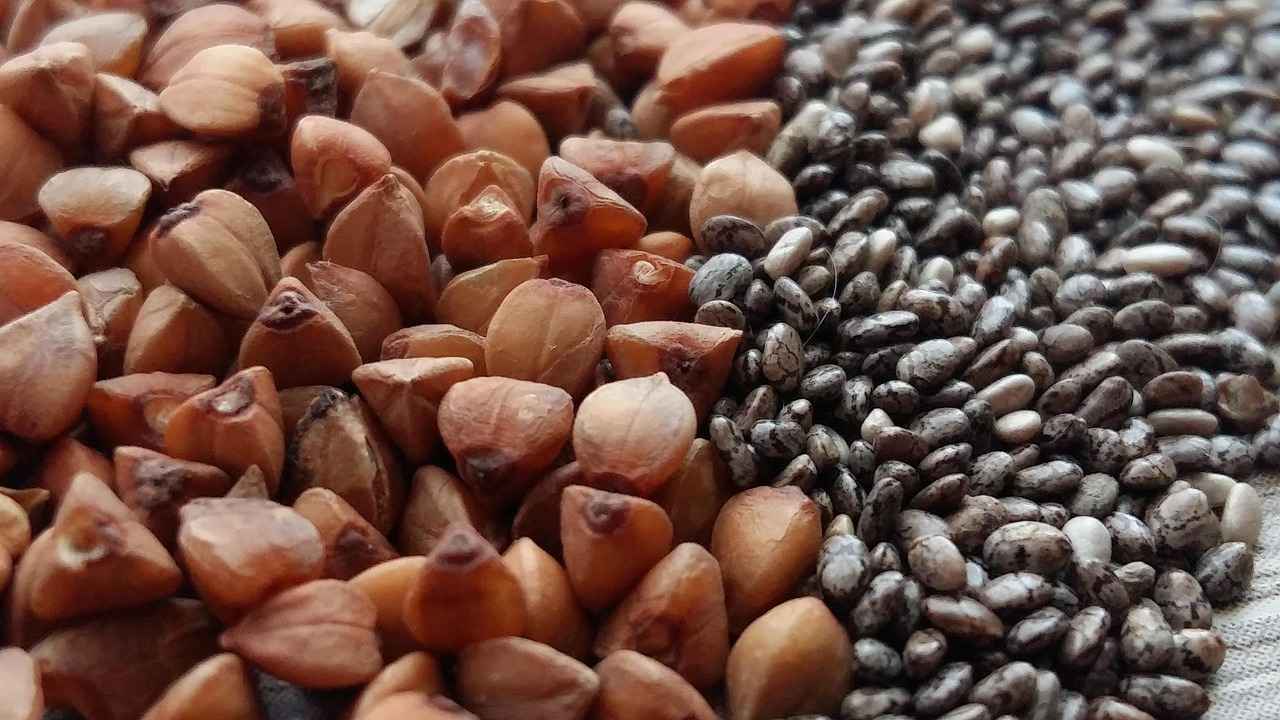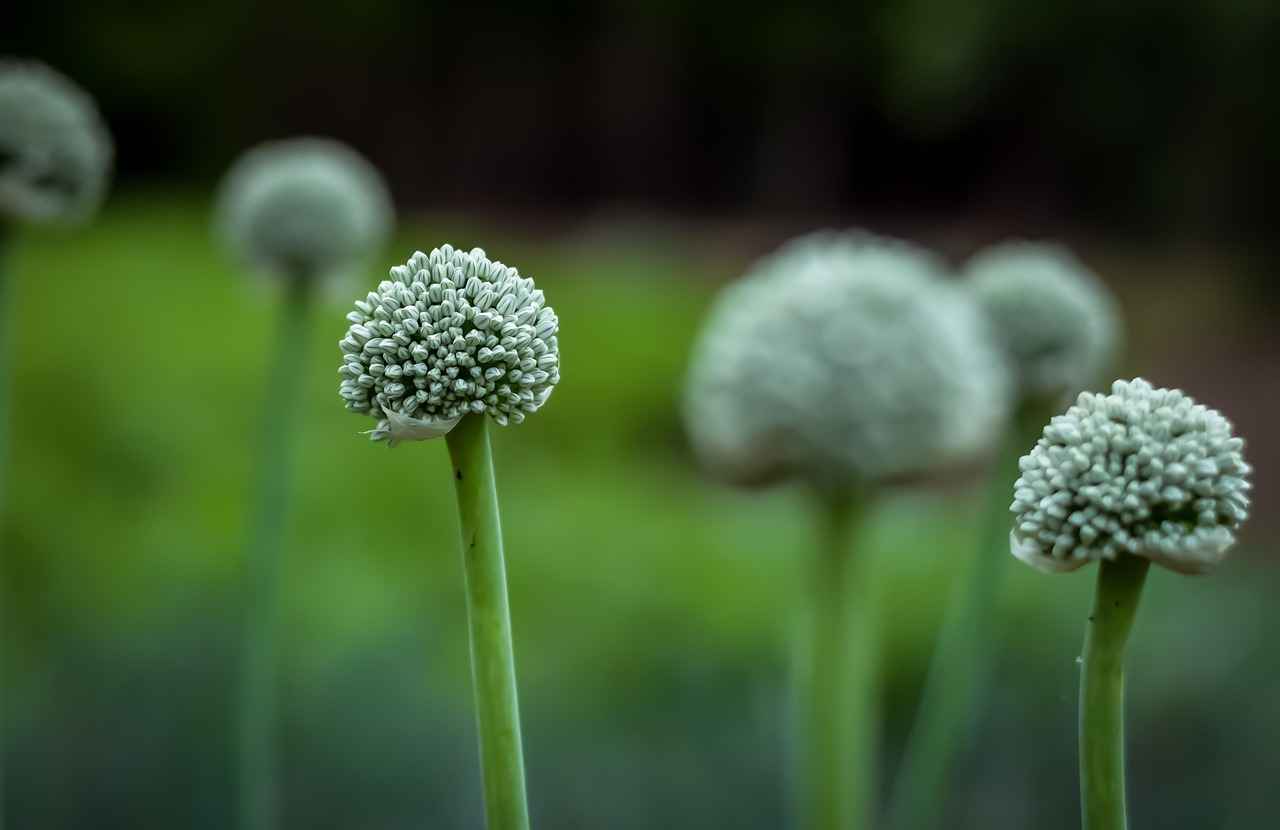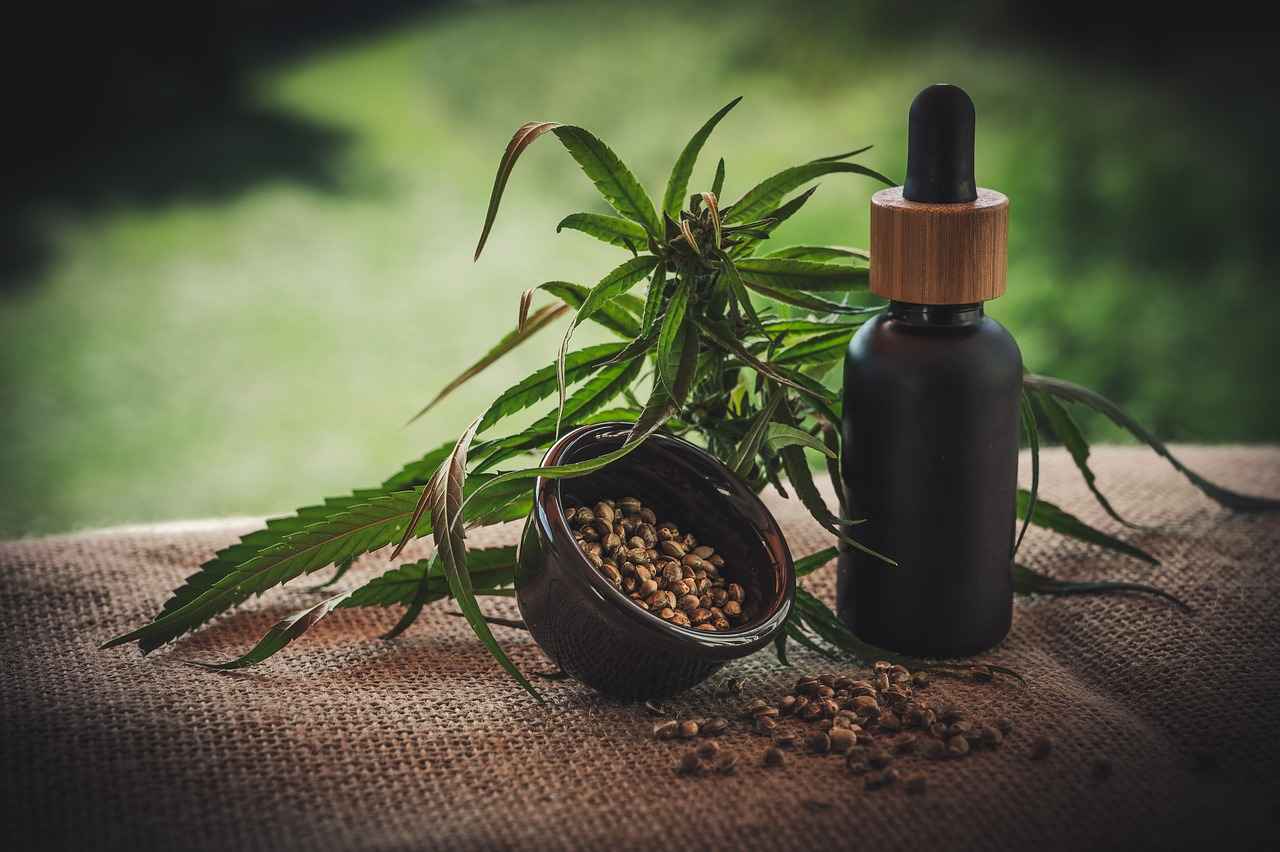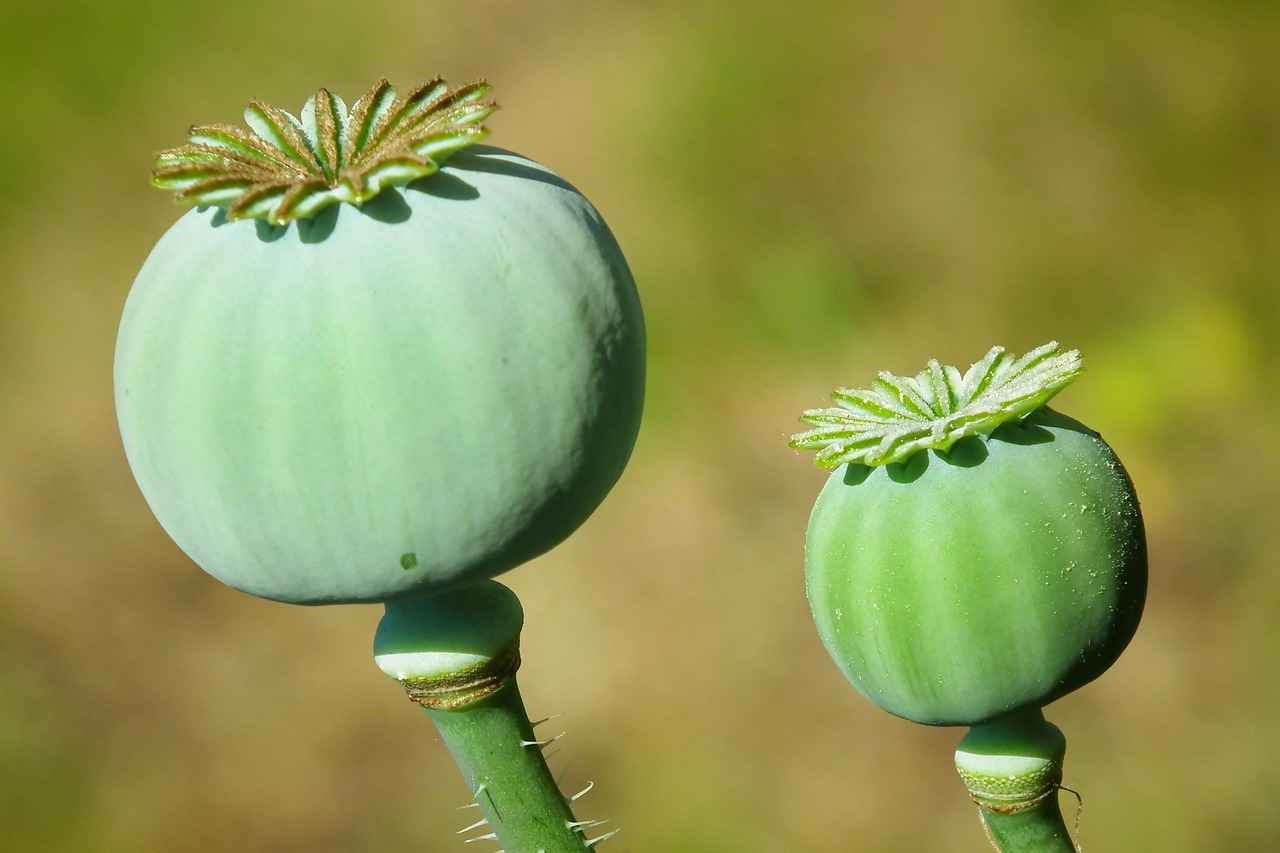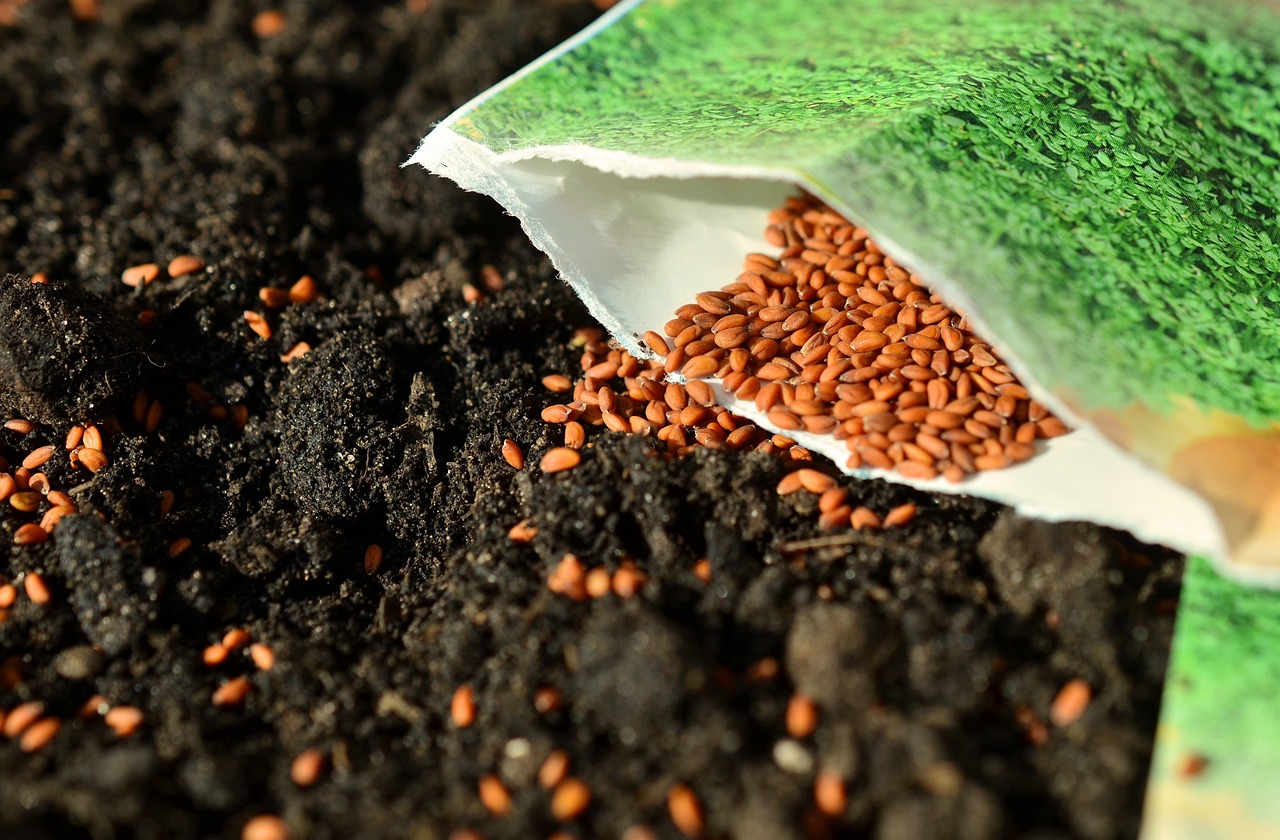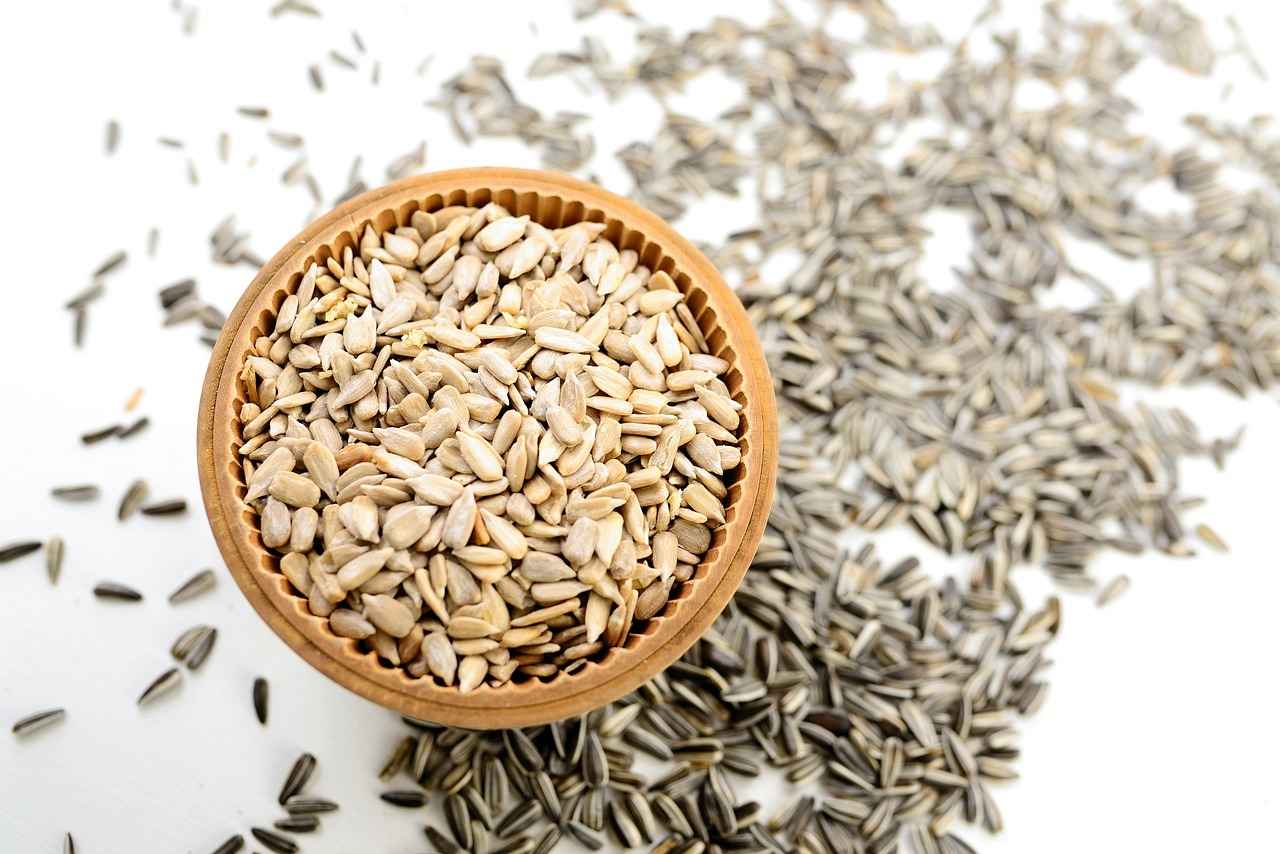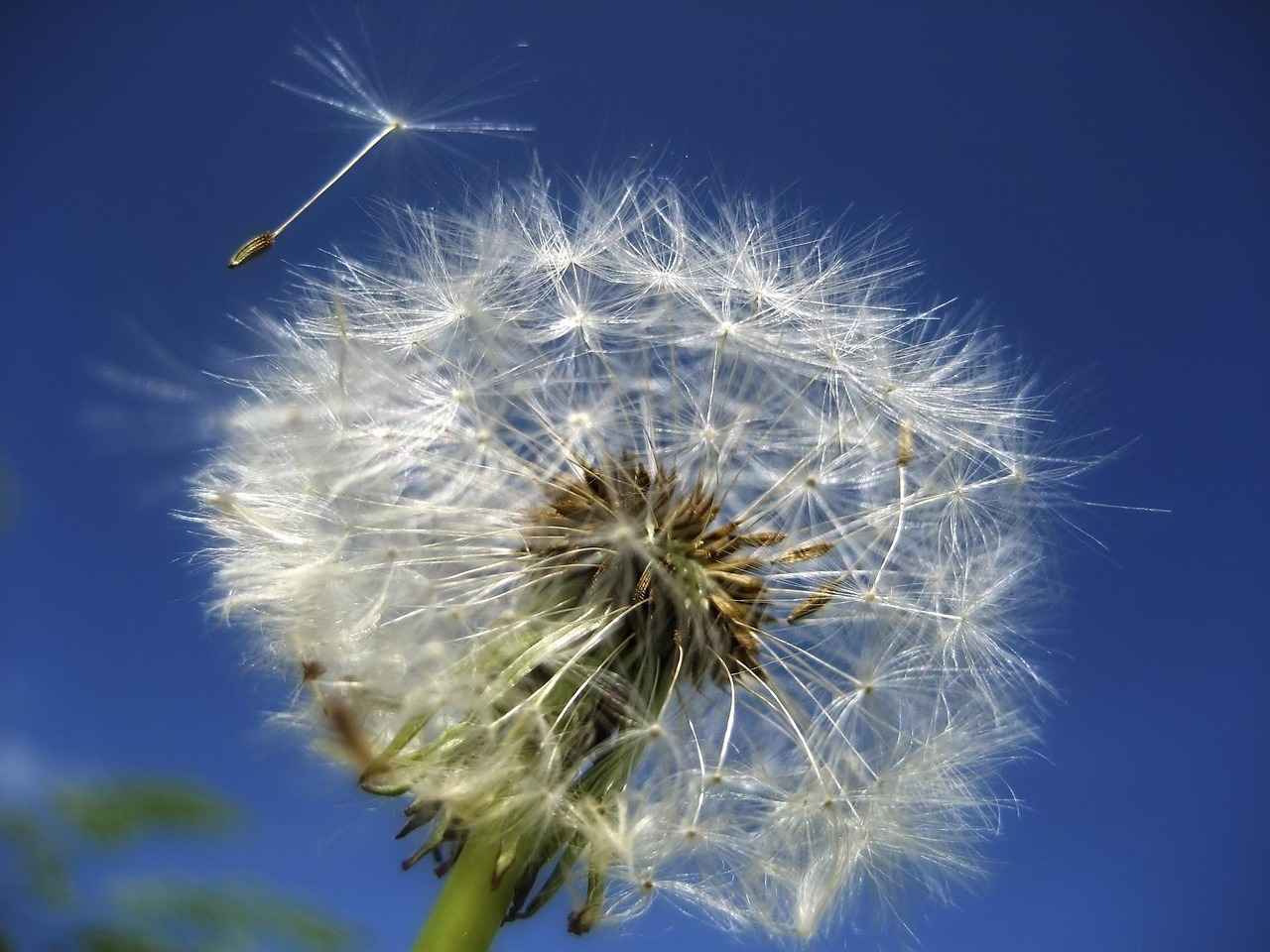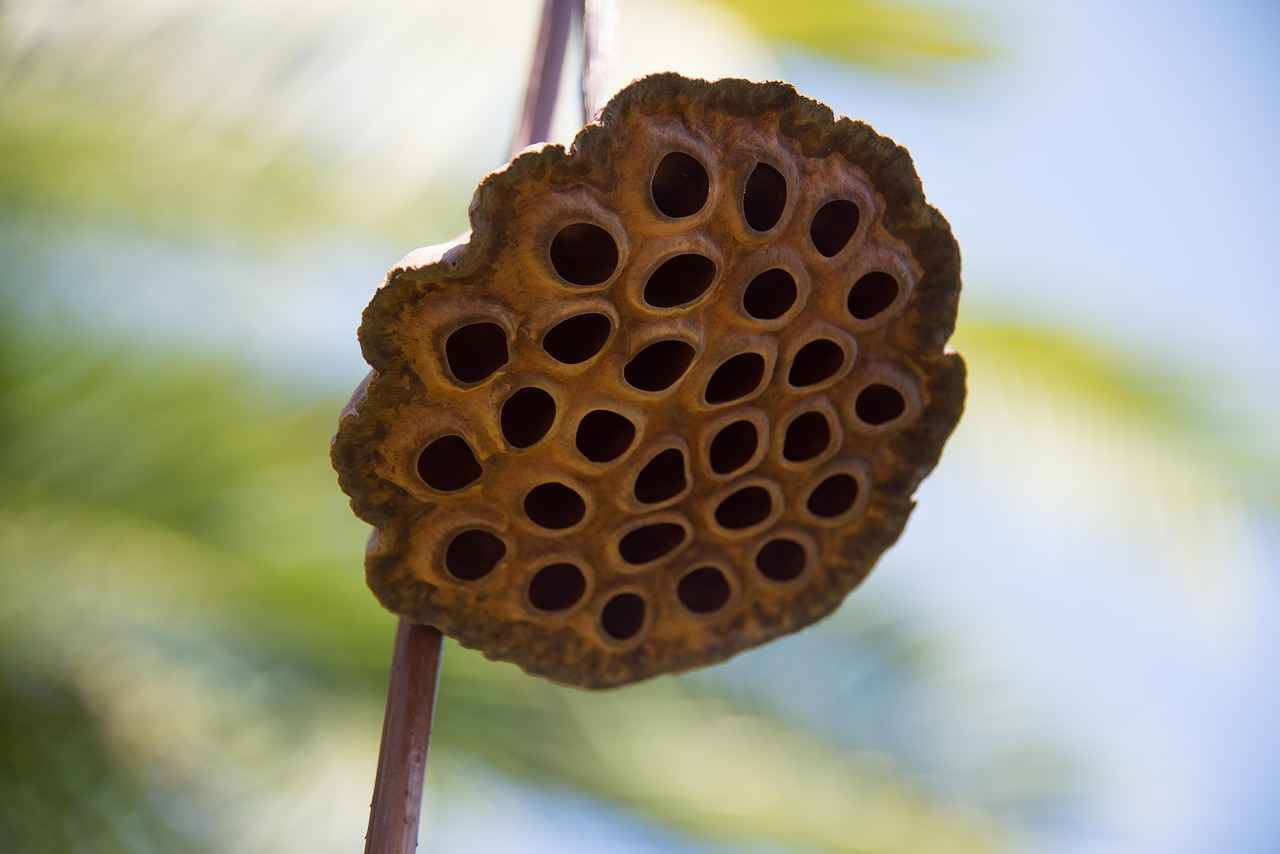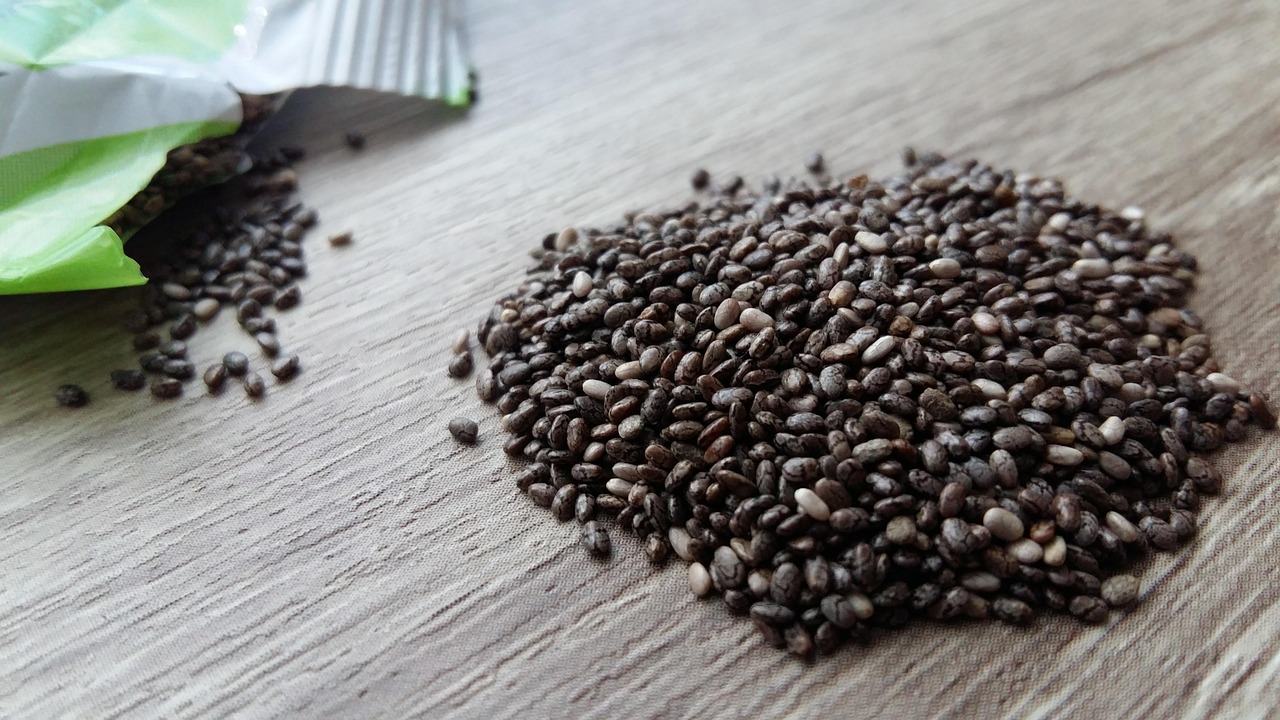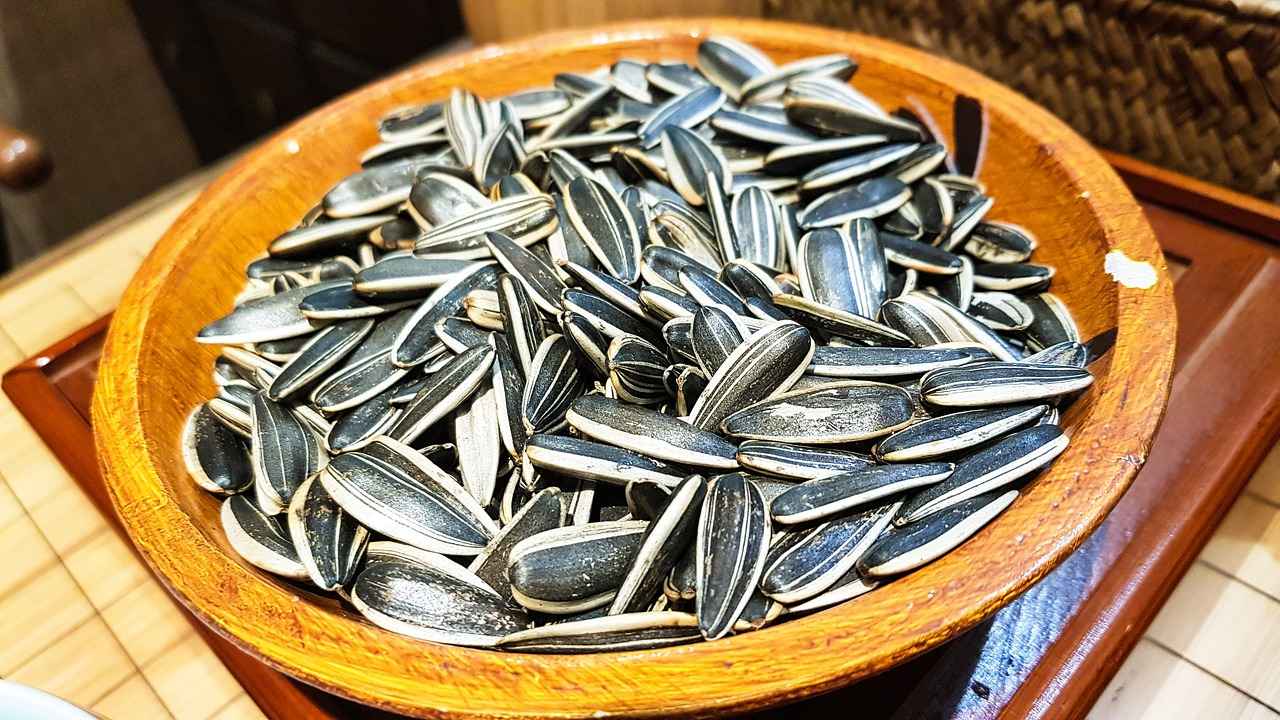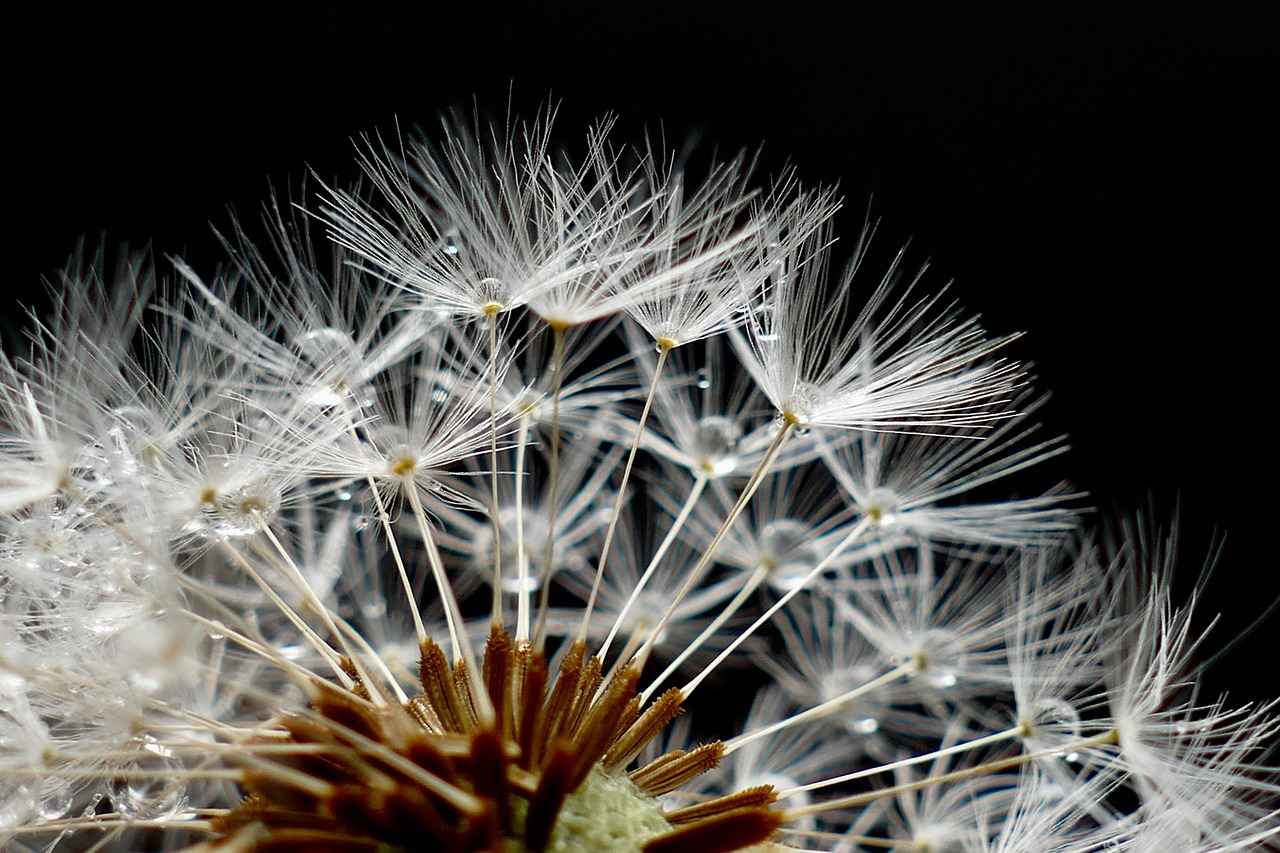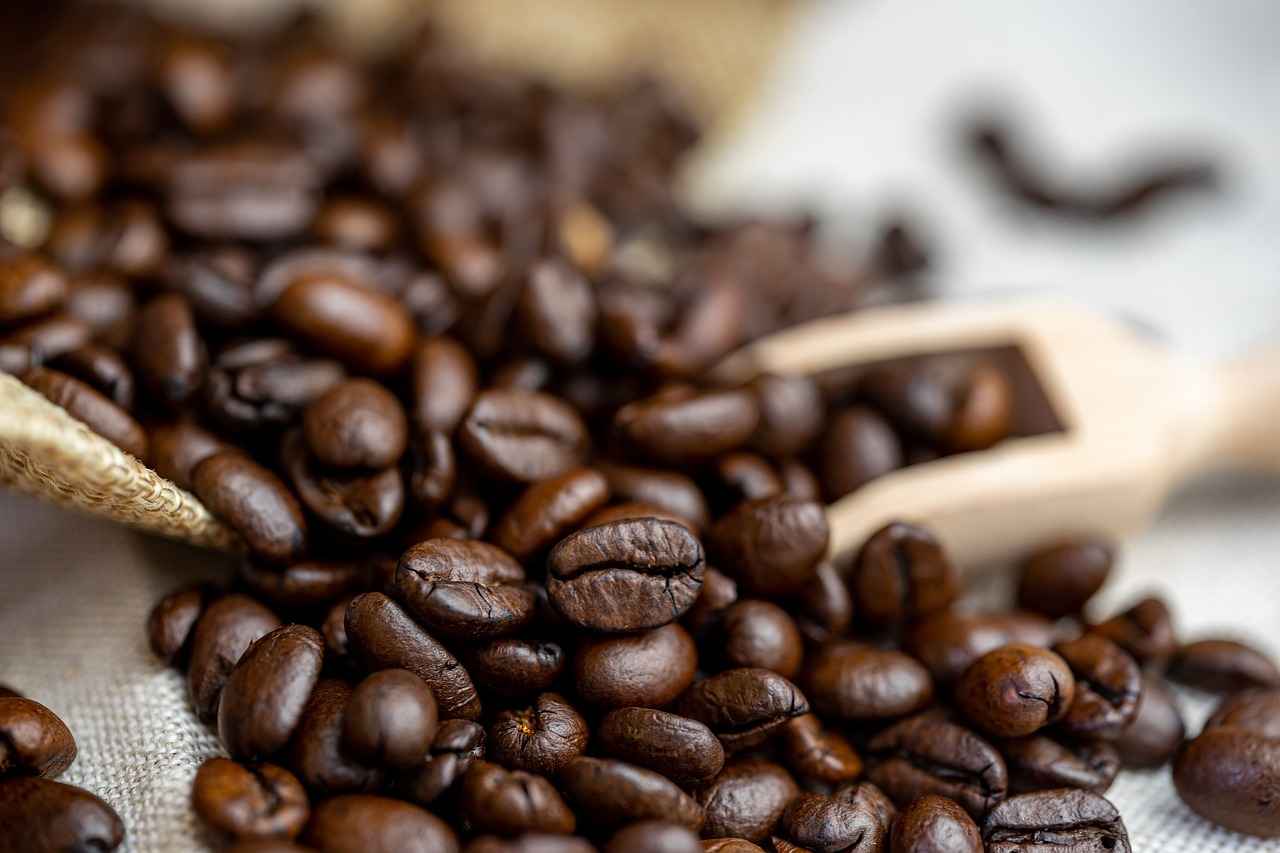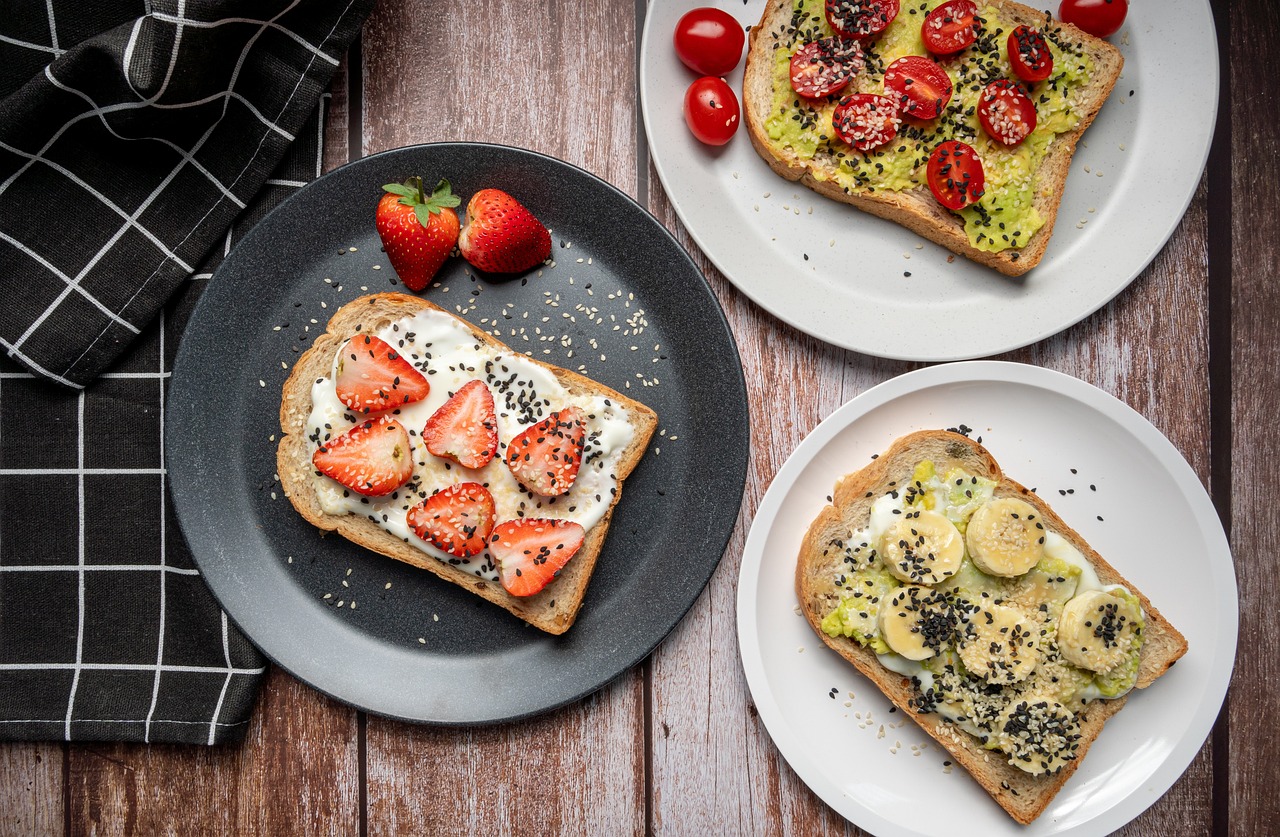This article delves into the shelf life of chia seeds, explaining how to determine their freshness and offering tips for proper storage to maximize the benefits of these nutritious seeds.
What Are Chia Seeds and Their Nutritional Benefits?
Chia seeds are small, yet incredibly nutrient-dense seeds that come from the Salvia hispanica plant. They are rich in fiber, protein, and omega-3 fatty acids, making them a popular choice for health-conscious individuals. Including chia seeds in your diet can help improve digestion, support heart health, and provide a steady source of energy.
How Long Do Chia Seeds Last?
When stored properly, chia seeds can have a shelf life of up to five years. This longevity is due to their high antioxidant content, which helps prevent spoilage. To manage your pantry effectively, it’s essential to know how to store them correctly.
Signs That Chia Seeds Have Expired
- Visual Inspection: Look for any signs of discoloration, clumping, or mold. Fresh seeds should be uniform in color and texture.
- Smell Test: Fresh chia seeds have a neutral, nutty aroma. If they smell rancid or off, it’s best to discard them.
How to Properly Store Chia Seeds
To maintain the freshness of chia seeds, follow these storage tips:
- Ideal Storage Conditions: Keep chia seeds in a cool, dry place in an airtight container to prevent moisture and air exposure.
- Refrigeration: While refrigeration is not necessary, it can help extend their shelf life, especially in warmer climates.
Can You Use Expired Chia Seeds?
Using expired chia seeds is a common concern among consumers. While they might not be harmful, their nutritional value may decline over time. It’s crucial to evaluate their condition before consumption.
Health Risks of Consuming Expired Seeds
Though consuming expired chia seeds may not always lead to health issues, they can pose risks such as digestive discomfort or reduced nutrient absorption. Always inspect your seeds before use.
How to Revive Old Chia Seeds
If your chia seeds are nearing their expiration date, you can try reviving them by soaking them in water or adding them to smoothies. This can help restore some of their texture and flavor.
Creative Ways to Use Chia Seeds in Your Diet
Chia seeds are versatile and can be easily incorporated into various recipes:
- Chia Seed Pudding: This popular recipe involves mixing chia seeds with milk or a dairy alternative and letting them sit until they thicken. Add fruits, nuts, or sweeteners for flavor.
- Adding Chia Seeds to Smoothies: Enhance your smoothies by adding a tablespoon of chia seeds for an extra boost of nutrition.
In conclusion, understanding the shelf life and storage of chia seeds is vital for enjoying their full benefits. By following the guidelines outlined above, you can ensure that your chia seeds remain fresh and nutritious for as long as possible.
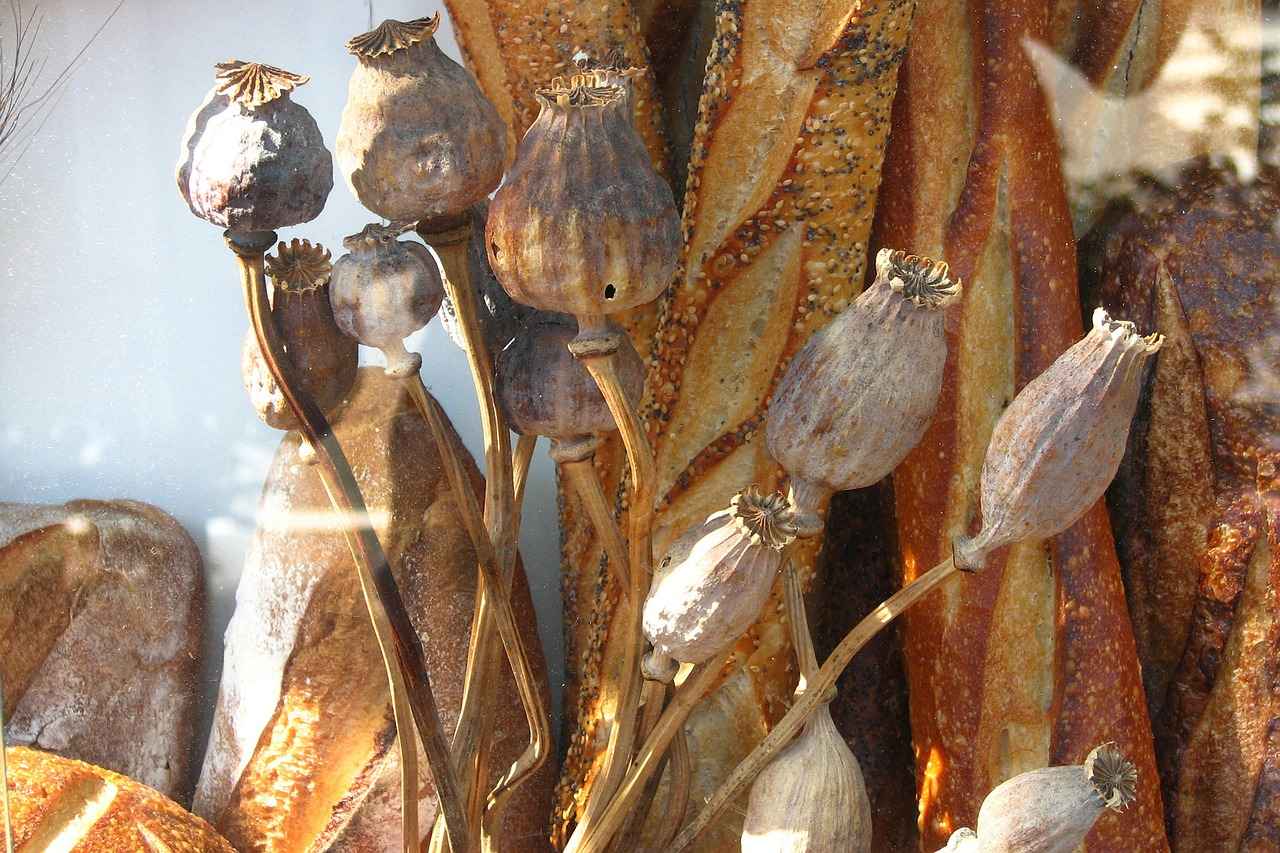
What Are Chia Seeds and Their Nutritional Benefits?
Chia seeds, derived from the Salvia hispanica plant, are tiny, yet powerful superfoods that have gained immense popularity in recent years. These seeds are not only easy to incorporate into various dishes but are also packed with essential nutrients that can significantly benefit your health. Understanding the nutritional benefits of chia seeds can inspire you to add them to your diet and enhance your overall wellness.
- Rich in Fiber: Chia seeds are an excellent source of dietary fiber, which aids in digestion and helps maintain a healthy weight. Just two tablespoons of chia seeds contain approximately 11 grams of fiber, making them a great addition to any meal.
- High in Protein: These seeds are a fantastic plant-based protein source, containing about 4 grams of protein per two tablespoons. This makes them particularly beneficial for vegetarians and vegans looking to meet their protein needs.
- Omega-3 Fatty Acids: Chia seeds are one of the richest plant sources of omega-3 fatty acids, particularly alpha-linolenic acid (ALA). Omega-3s are known for their heart health benefits and can help reduce inflammation in the body.
- Antioxidants: Chia seeds are loaded with antioxidants, which protect the body from oxidative stress and free radicals. This can contribute to a lower risk of chronic diseases and promote overall health.
- Minerals and Vitamins: Chia seeds are a good source of essential minerals such as calcium, magnesium, and phosphorus, as well as vitamins B1 (thiamine) and B3 (niacin). These nutrients play crucial roles in various bodily functions, including bone health and energy metabolism.
Incorporating chia seeds into your diet can be incredibly easy. You can add them to smoothies, yogurt, or oatmeal, or even use them as a thickening agent in soups and sauces. Their ability to absorb liquid and form a gel-like consistency makes them perfect for creating chia seed pudding, a popular and nutritious dessert option.
Moreover, the health benefits of chia seeds extend beyond their nutritional content. Regular consumption can lead to improved heart health, better digestive function, and enhanced weight management. The combination of fiber and protein helps you feel full longer, reducing the likelihood of unhealthy snacking.
In conclusion, chia seeds are a powerful addition to any diet, offering a range of health benefits that can improve your overall well-being. By understanding their nutritional value and incorporating them into your meals, you can harness the full potential of these tiny seeds and support a healthier lifestyle.
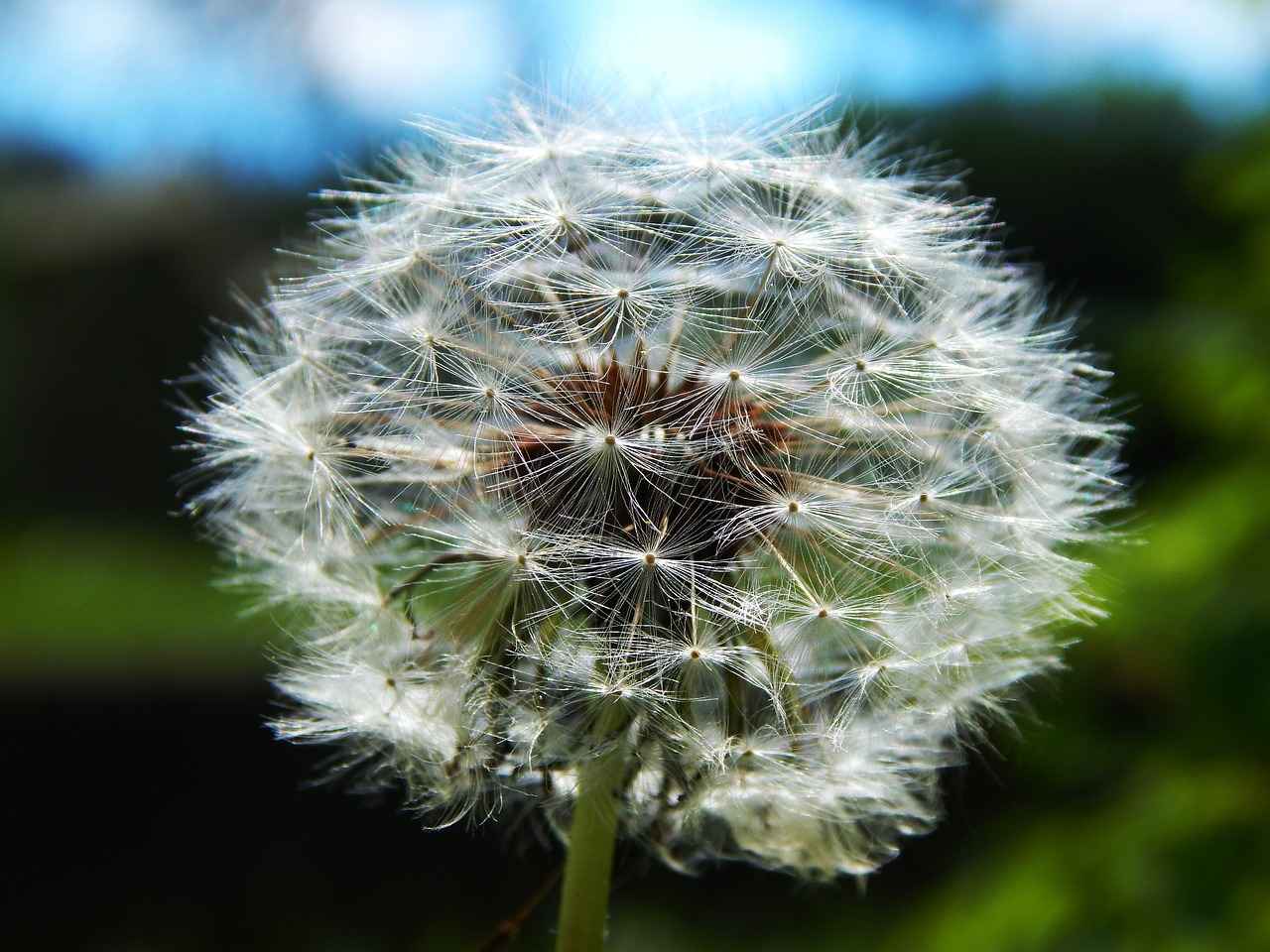
How Long Do Chia Seeds Last?
Chia seeds have gained popularity in recent years as a superfood, renowned for their numerous health benefits. However, many people often wonder, how long do chia seeds last? Understanding the shelf life of these tiny seeds is essential for ensuring you get the most out of their nutritional value while minimizing waste.
Typically, chia seeds can last up to five years when stored correctly. Their longevity is one of the reasons they are favored by health enthusiasts and those looking to stock up on nutritious foods. However, the key to maximizing their shelf life lies in proper storage methods.
When stored in a cool, dry place in an airtight container, chia seeds can maintain their freshness for an extended period. Exposure to moisture and air can lead to spoilage, so it’s crucial to keep them sealed tightly. Additionally, storing them away from direct sunlight will help preserve their quality.
But how can you tell if your chia seeds are still good? There are several signs to look for:
- Visual Inspection: Check for any discoloration or clumping. Fresh chia seeds should appear uniform in color and texture.
- Smell Test: Fresh chia seeds have a neutral, nutty aroma. If they emit a rancid or off-putting smell, it’s best to discard them.
- Texture Check: When you soak chia seeds, they should absorb water and form a gel-like consistency. If they do not swell or remain hard, they may be past their prime.
While refrigeration is not necessary for chia seeds, it can extend their shelf life even further. If you live in a particularly humid environment or have opened a package, consider storing them in the refrigerator to keep them fresh longer.
So, can you use expired chia seeds? While they may not pose immediate health risks, their nutritional value may diminish over time. Consuming expired seeds could lead to digestive discomfort or other mild side effects. If you find yourself with older seeds, you might wonder how to revive them. Soaking them in water or adding them to smoothies can help rehydrate and rejuvenate their properties.
Incorporating chia seeds into your diet is easy and beneficial. From chia seed pudding to smoothies and baked goods, these seeds can enhance the nutritional profile of many recipes. By understanding the shelf life and storage methods of chia seeds, you can enjoy their health benefits without the worry of spoilage.
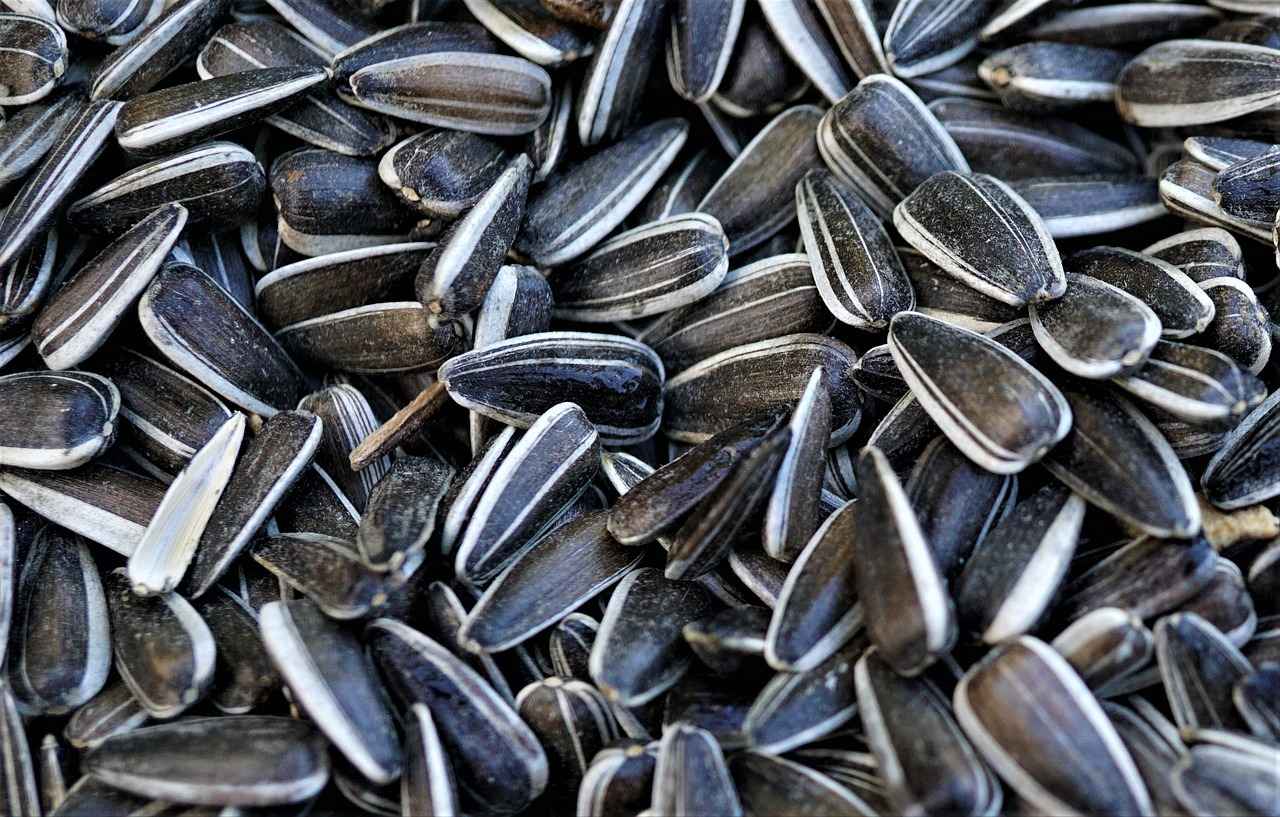
Signs That Chia Seeds Have Expired
When it comes to ensuring the quality of your chia seeds, it’s vital to recognize the signs of expiration. Chia seeds are celebrated for their nutritional benefits, but consuming expired seeds can lead to undesirable outcomes. This section will guide you through the key indicators that your chia seeds may no longer be safe to eat.
Start with a visual inspection of your chia seeds. Here are the main signs to check for:
- Discoloration: Fresh chia seeds are typically a uniform color, either black or white. If you notice any unusual colors, such as yellow or gray, it may indicate spoilage.
- Clumping: Clumping can occur when moisture has compromised the seeds. If they stick together, it’s a sign that they may no longer be fresh.
- Mold Growth: Any visible mold on the seeds is a clear indicator that they should be discarded immediately.
The aroma of chia seeds can significantly inform you about their state. Follow these guidelines:
- Fresh Seeds: They should emit a neutral, nutty scent. If you detect a rancid or sour smell, it’s best to err on the side of caution.
- Odor Changes: Any strong or unpleasant odors suggest that the seeds have gone bad and should not be consumed.
In addition to visual and olfactory inspections, pay attention to the texture and taste of chia seeds:
- Texture: Fresh chia seeds should feel firm and slightly crunchy. If they are overly soft or mushy, they may be spoiled.
- Taste: A small taste test can also reveal freshness. If the seeds taste bitter or off, it’s a sign they have expired.
Always check the expiration date on the packaging. While chia seeds can last up to five years when stored properly, it’s crucial to consider:
- Packaging Integrity: If the package is damaged or has been opened for a long time, the seeds may be compromised.
- Storage Conditions: Exposure to heat, light, or moisture can accelerate spoilage. Ensure that your seeds are stored in a cool, dark place.
Being aware of these signs of expiration can help you make informed decisions about the chia seeds you consume. Regularly checking your seeds for visual, olfactory, and textural indicators will ensure that you enjoy their full nutritional benefits without risking your health. Remember, when in doubt, it’s safer to discard expired seeds and purchase fresh ones.
Visual Inspection: What to Look For
When it comes to ensuring the quality of your chia seeds, a thorough visual inspection is essential. This step can help you determine whether your seeds are still fresh and safe to consume. Here are the key aspects to consider during your inspection:
- Discoloration: Fresh chia seeds typically have a uniform color, either black or white, depending on the variety. If you notice any dark spots or unusual hues, it may indicate that the seeds are beginning to spoil.
- Clumping: Chia seeds should be free-flowing and not clumped together. If you observe clumps, it could be a sign of moisture exposure, which can lead to spoilage. Always check for softness or stickiness in the seeds, as these are indicators of potential mold growth.
- Mold: The presence of mold is a clear indication that your chia seeds have gone bad. Mold can appear as fuzzy spots on the seeds or within the packaging. If you spot any mold, it is crucial to discard the seeds immediately to avoid health risks.
- Insect Infestation: Check for any signs of bugs or insects within the packaging. If you see tiny holes or movement, it is best to throw the seeds away, as they may be contaminated.
Aside from these visual cues, you should also consider the packaging of the chia seeds. If the packaging is damaged or not sealed properly, the seeds are more likely to be exposed to air and moisture, which can accelerate spoilage.
Another important factor to keep in mind is the expiration date printed on the packaging. While chia seeds can last for several years, it’s essential to consume them before this date for optimal freshness and nutritional value.
By conducting a careful visual inspection and paying attention to these signs, you can ensure that your chia seeds remain fresh and safe for consumption. This simple yet effective step can help you maintain the quality and nutritional benefits of these tiny powerhouses.
In summary, always trust your senses when inspecting chia seeds. If you notice any irregularities, it’s better to be safe than sorry. Discard any seeds that show signs of spoilage to protect your health and enjoy the full benefits of chia seeds in your diet.
Smell Test: How Aroma Indicates Freshness
When it comes to ensuring the quality of chia seeds, aroma plays a crucial role. The scent of these tiny seeds can be a reliable indicator of their freshness and overall quality. Fresh chia seeds typically possess a neutral, nutty aroma that is pleasant and mild. This aroma is a sign that the seeds are in good condition and ready to be incorporated into your meals.
However, as chia seeds age or are improperly stored, their aroma can change significantly. Rancidity is a common issue for many types of seeds, including chia. Rancid seeds may emit a distinctly unpleasant odor that can be described as stale or even sour. If you encounter this kind of smell when handling your chia seeds, it is a clear indication that they have gone bad and should not be consumed.
To better understand the importance of the smell test, consider the following points:
- Freshness Indicator: A neutral, nutty scent is a strong sign of freshness.
- Rancidity Warning: An off or sour smell indicates that the seeds are no longer good.
- Storage Impact: Improper storage can lead to rancidity, affecting both aroma and taste.
In addition to the smell test, it is essential to combine this with other evaluation methods. For instance, visual inspection can help identify any physical signs of spoilage, such as discoloration or clumping. Together, these tests provide a comprehensive approach to assessing the quality of chia seeds.
To maintain the fresh aroma of your chia seeds, consider the following storage tips:
- Airtight Containers: Store chia seeds in airtight containers to minimize exposure to air and moisture.
- Cool, Dark Locations: Keep them in a cool, dark pantry or cupboard to prevent heat and light from degrading their quality.
- Refrigeration: If you buy chia seeds in bulk or live in a warm climate, refrigerating them can help extend their shelf life.
In summary, the smell of chia seeds is a vital aspect of ensuring their freshness. By utilizing the smell test alongside visual inspection and proper storage techniques, you can enjoy the nutritional benefits of chia seeds while avoiding the unpleasant experience of consuming rancid seeds. Always trust your senses when evaluating food quality, as they can guide you towards making the best choices for your health.
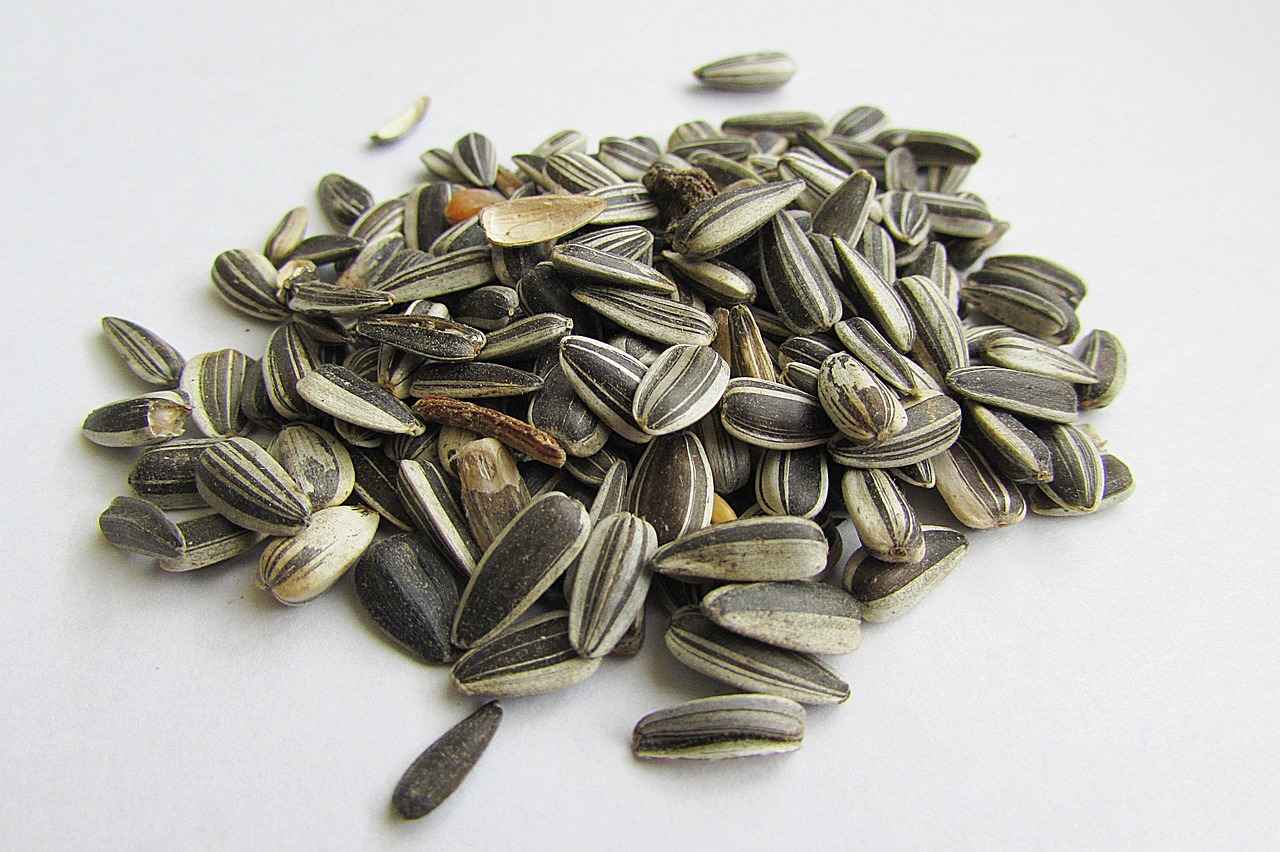
How to Properly Store Chia Seeds
When it comes to maximizing the shelf life and freshness of chia seeds, proper storage is essential. These tiny seeds, known for their impressive nutritional profile, can lose their quality if not stored correctly. This section provides practical tips and insights to help you store your chia seeds effectively, ensuring that they remain fresh and nutritious for as long as possible.
Chia seeds are highly sensitive to environmental factors such as moisture, light, and air. Improper storage can lead to rancidity and spoilage, diminishing their health benefits. By following the right storage practices, you can prolong their shelf life and maintain their quality.
- Cool and Dry Environment: Store chia seeds in a cool, dry place away from direct sunlight. A pantry or cupboard is usually ideal.
- Airtight Containers: Use airtight containers to protect chia seeds from moisture and air exposure. Glass jars or high-quality plastic containers work well.
- Darkness is Key: Light can degrade the quality of chia seeds over time. Consider using opaque containers to shield them from light.
While refrigeration is not mandatory for chia seeds, it can be beneficial in extending their shelf life. If you live in a humid climate or plan to store chia seeds for an extended period, consider placing them in the refrigerator. The cooler temperature helps to slow down the oxidation process, keeping the seeds fresher for longer.
Even with proper storage, it’s essential to regularly check your chia seeds for freshness. Here are some tips:
- Visual Inspection: Look for any signs of discoloration or clumping. Fresh chia seeds should be a consistent color and texture.
- Smell Test: Take a whiff of the seeds. Fresh chia seeds have a neutral, nutty aroma. If they smell rancid or off, it’s best to discard them.
When stored correctly, chia seeds can last up to five years. However, it’s always a good idea to check for freshness before use, especially if they have been stored for a long time. Regularly rotating your stock can help you use the older seeds first, minimizing waste.
For those who enjoy meal prep or bulk buying, consider these creative storage solutions:
- Portioning: Divide chia seeds into smaller portions to make them easier to use and reduce exposure to air each time you open a container.
- Labeling: Clearly label your containers with the purchase date. This practice helps keep track of freshness and ensures you use the oldest seeds first.
By following these practical tips for storing chia seeds, you can enjoy their numerous health benefits for an extended period. Proper storage not only maintains their freshness but also ensures that you get the maximum nutritional value from these tiny superfoods.
Ideal Storage Conditions for Chia Seeds
When it comes to storing chia seeds, understanding the ideal conditions is crucial for maintaining their freshness and nutritional value. Chia seeds are known for their long shelf life, but improper storage can lead to spoilage, diminishing their health benefits. Here’s a comprehensive look at how to properly store chia seeds to ensure they remain good for consumption.
Chia seeds should be stored in a cool, dry place, away from direct sunlight and heat sources. The best option is to use an airtight container, which helps to shield the seeds from moisture and air exposure. Both moisture and air can lead to rancidity and spoilage, compromising the seeds’ quality.
It is also advisable to keep chia seeds in a pantry or cupboard that maintains a consistent temperature. Fluctuations in temperature can affect the seeds, so a stable environment is key. Here are some practical storage tips:
- Use Glass or Plastic Containers: Opt for clear glass or high-quality plastic containers that can be sealed tightly. This not only keeps the seeds safe from air but also allows you to easily check the quantity remaining.
- Avoid Humid Areas: Do not store chia seeds in areas prone to humidity, such as above the stove or near the sink. Humidity can lead to clumping and spoilage.
- Label Your Containers: If you purchase chia seeds in bulk, consider labeling your containers with the purchase date. This practice helps you keep track of their freshness.
- Consider Refrigeration: While refrigeration is not necessary, it can significantly extend the shelf life of chia seeds. If you live in a particularly warm climate or plan to keep them for an extended period, refrigeration is a wise choice.
The nutritional profile of chia seeds is impressive, boasting high levels of fiber, protein, and omega-3 fatty acids. However, these benefits can be lost if the seeds are not stored correctly. For instance, exposure to air can lead to oxidation, which diminishes the healthy fats present in the seeds. By ensuring that chia seeds are kept in optimal conditions, you can enjoy their full range of health benefits.
In conclusion, proper storage of chia seeds is essential for maintaining their quality and nutritional value. By following these guidelines and keeping your seeds in a cool, dry place in an airtight container, you can ensure that they remain fresh and ready to enhance your meals.
Refrigeration: Is It Necessary?
When it comes to storing chia seeds, one question often arises: Is refrigeration necessary? While chia seeds are known for their impressive shelf life, refrigeration can play a significant role in extending their freshness. This section explores the reasons you might choose to refrigerate your seeds, along with practical tips for optimal storage.
Chia seeds are naturally resilient and can last up to five years when stored in a cool, dry place. However, factors such as temperature, humidity, and exposure to light can affect their longevity. Refrigeration is not required, but it can be beneficial in certain circumstances:
- Humidity Control: If you live in a humid climate, storing chia seeds in the refrigerator can help prevent moisture from causing spoilage. Moisture can lead to clumping and mold growth, which diminishes the quality of your seeds.
- Extended Freshness: Refrigerating chia seeds can slow down the oxidation process, preserving their nutritional value for a longer time. This is particularly important if you buy in bulk or do not use them frequently.
- Avoiding Rancidity: While chia seeds are less prone to rancidity compared to other seeds due to their high antioxidant content, refrigeration can further reduce the risk, especially if the seeds have been opened and exposed to air.
For those who choose to refrigerate their chia seeds, here are some practical tips:
1. Use an airtight container to minimize exposure to air and moisture.2. Label the container with the purchase date to keep track of freshness.3. Allow the seeds to reach room temperature before using them in recipes, as this can enhance their texture and flavor.
It’s worth noting that while refrigeration can enhance the shelf life of chia seeds, it is not a necessity for everyone. If you regularly consume chia seeds and store them properly, keeping them in a pantry away from light and moisture may suffice. However, if you prefer to buy in larger quantities or live in a warmer, more humid environment, refrigeration becomes a wise choice.
In summary, while refrigeration is not mandatory for chia seeds, it can offer several advantages in terms of freshness and longevity. By understanding the benefits and following proper storage methods, you can ensure that your chia seeds remain as nutritious and delicious as possible.
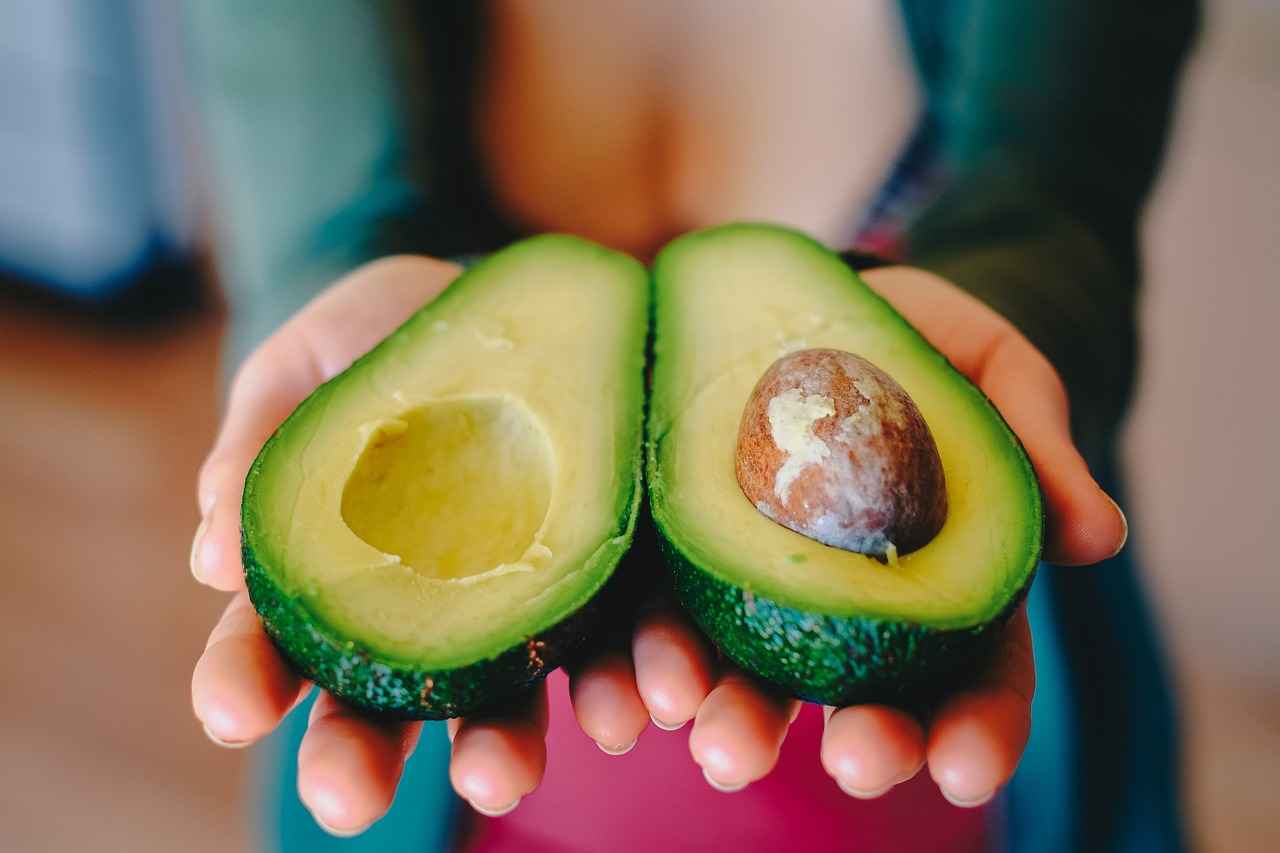
Can You Use Expired Chia Seeds?
Chia seeds are celebrated for their numerous health benefits, but what happens when they approach or pass their expiration date? This question often raises concerns among health-conscious individuals. In this section, we will explore the safety and nutritional value of consuming expired chia seeds, providing you with the information needed to make an informed decision.
Understanding Chia Seed Expiration
Chia seeds, like many food products, come with an expiration date that indicates the period during which the seeds are expected to maintain their optimal quality. However, this does not mean that they are unsafe to consume immediately after this date. In fact, chia seeds can remain safe for consumption for some time after their expiration date, provided they have been stored correctly.
Safety of Consuming Expired Chia Seeds
When evaluating whether it’s safe to consume expired chia seeds, consider the following factors:
- Storage Conditions: If chia seeds have been kept in a cool, dry place in an airtight container, they are likely to remain safe for a longer period.
- Visual and Olfactory Checks: Inspect the seeds for any signs of spoilage, such as discoloration or a rancid smell. Fresh seeds should have a mild, nutty aroma.
- Texture: If the seeds are clumping together or feel sticky, this can indicate moisture exposure, making them less safe to consume.
Nutritional Value After Expiration
While expired chia seeds may still be safe to eat, their nutritional value might diminish over time. Chia seeds are rich in omega-3 fatty acids, fiber, and protein, but these nutrients can degrade past their expiration date. Consuming chia seeds that are close to or past their expiration may not provide the same health benefits as fresh seeds.
Health Risks of Consuming Expired Seeds
Though chia seeds are not typically harmful when consumed after their expiration date, there are potential risks. Some common side effects of consuming expired seeds include:
- Digestive Issues: Spoiled seeds can lead to gastrointestinal discomfort, including bloating or gas.
- Foodborne Illness: Although rare, there is a risk of contamination if seeds have been improperly stored.
- Reduced Nutritional Benefits: As mentioned, the health benefits may be significantly lower, making them less effective as a dietary supplement.
How to Revive Old Chia Seeds
If you find yourself with chia seeds that are nearing their expiration date, there are a few ways to maximize their use:
- Soaking: Soaking chia seeds in water can help restore some of their texture and nutritional properties. This method can also enhance their digestibility.
- Incorporation into Recipes: Adding chia seeds to smoothies, baked goods, or puddings can mask any slight changes in taste and texture while still allowing you to enjoy their benefits.
In summary, while expired chia seeds can still be safe to consume, it is essential to assess their condition carefully. By following proper storage techniques and being mindful of any signs of spoilage, you can make the most of your chia seeds, even if they are past their expiration date.
Health Risks of Consuming Expired Seeds
When it comes to chia seeds, many health enthusiasts appreciate their numerous benefits. However, a common question arises: What are the health risks of consuming expired chia seeds? Understanding these risks is crucial for making informed dietary choices.
While chia seeds have a long shelf life, consuming them after their expiration date can lead to several potential side effects. Here are some important considerations:
- Rancidity: Expired chia seeds may develop a rancid taste due to the oxidation of their healthy fats. This can result in an unpleasant flavor that can ruin your meals.
- Digestive Issues: Consuming expired seeds may lead to gastrointestinal discomfort, including bloating, gas, or even diarrhea. This is particularly true if the seeds have absorbed moisture or have gone bad.
- Reduced Nutritional Value: Over time, the nutritional profile of chia seeds can degrade. Vitamins and antioxidants may diminish, making them less beneficial for your health.
- Allergic Reactions: In rare cases, consuming expired seeds can trigger allergic reactions in sensitive individuals. Symptoms may include itching, swelling, or rashes.
Before consuming chia seeds, it’s essential to perform a thorough assessment of their condition. Here are some practical tips:
- Visual Inspection: Check for any signs of mold, discoloration, or clumping. Fresh chia seeds should have a consistent color and texture.
- Smell Test: Fresh chia seeds emit a mild, nutty aroma. If they smell off or rancid, it’s best to discard them.
- Texture Check: Feel the seeds between your fingers. They should be dry and free-flowing. Any stickiness or clumping indicates spoilage.
While it may be tempting to consume expired chia seeds, it’s essential to weigh the risks. Here are some tips for making informed decisions:
- Trust Your Senses: Use your senses to evaluate the seeds. If they appear, smell, or feel off, it’s best to err on the side of caution and dispose of them.
- Consider Storage Conditions: If chia seeds have been stored improperly, such as in a humid environment, they may spoil faster. Always store them in a cool, dry place in an airtight container.
- Consult Experts: When in doubt, consult a nutritionist or health expert for personalized advice regarding the consumption of expired seeds.
If you find yourself with older chia seeds that are nearing their expiration date, there are ways to potentially revive them:
- Soaking: Soaking chia seeds in water can help restore their texture and make them easier to digest. This can also help enhance their nutritional absorption.
- Mixing with Fresh Ingredients: Incorporating older seeds into recipes with fresh ingredients, like smoothies or baked goods, can mask any slight off-flavors while still providing some nutritional benefits.
In conclusion, while expired chia seeds may not always be harmful, consuming them can pose health risks. By understanding the potential side effects and knowing how to assess their freshness, you can make informed decisions about your dietary choices and continue to enjoy the benefits of chia seeds safely.
How to Revive Old Chia Seeds
Chia seeds are a fantastic source of nutrition, but like all food products, they have a shelf life. If you find yourself with older chia seeds that are nearing their expiration date, you might wonder how to make the most of them. Fortunately, there are several effective methods to revive these seeds and ensure they remain a valuable addition to your diet.
Before attempting to revive old chia seeds, it’s essential to identify whether they are indeed past their prime. Look for the following signs:
- Discoloration: Fresh chia seeds are typically dark brown or black. If you notice a faded or unusual color, it may indicate that they have lost their freshness.
- Clumping: If the seeds have clumped together, this could be a sign of moisture exposure, which can lead to spoilage.
- Odor: Fresh chia seeds have a mild, nutty smell. A rancid or off-putting odor is a clear indication that they may not be safe to consume.
If your chia seeds show only minor signs of aging, there are several methods you can use to revive them:
- Hydration: Soaking chia seeds in water can help rejuvenate their texture and flavor. Mix 1 part chia seeds with 6 parts water and let them sit for about 30 minutes. This process creates a gel-like consistency, making them perfect for smoothies or puddings.
- Mix with Fresh Ingredients: Incorporating old chia seeds into recipes that contain fresh ingredients can mask any minor flavor issues. Consider adding them to fruit smoothies, oatmeal, or yogurt, where their texture will blend seamlessly.
- Cooking: Use chia seeds in baked goods like muffins or bread. The cooking process can help revive their flavor and make them more palatable.
To prevent your chia seeds from aging prematurely, proper storage is crucial:
- Airtight Containers: Store chia seeds in an airtight container to protect them from moisture and air exposure. Glass jars or vacuum-sealed bags work well.
- Cool, Dark Places: Keep your chia seeds in a cool, dark place, such as a pantry or cupboard, away from direct sunlight and heat sources.
- Refrigeration: For extended shelf life, consider refrigerating your chia seeds. This can help maintain their freshness for a longer period.
Once you’ve revived your chia seeds, you can safely incorporate them back into your meals. They are versatile and can be added to a variety of dishes:
- Chia Seed Pudding: A popular way to enjoy chia seeds, simply mix them with your choice of milk and sweetener, and let them sit overnight in the fridge.
- Smoothies: Blend them into your favorite smoothie recipes for an added nutritional boost.
- Baked Goods: Incorporate them into muffins, bread, and other baked items for added texture and nutrition.
In summary, while chia seeds do have a shelf life, with the right techniques, you can revive older seeds and continue to enjoy their numerous health benefits. By following proper storage methods and utilizing creative ways to incorporate them into your meals, you can ensure that no seeds go to waste.
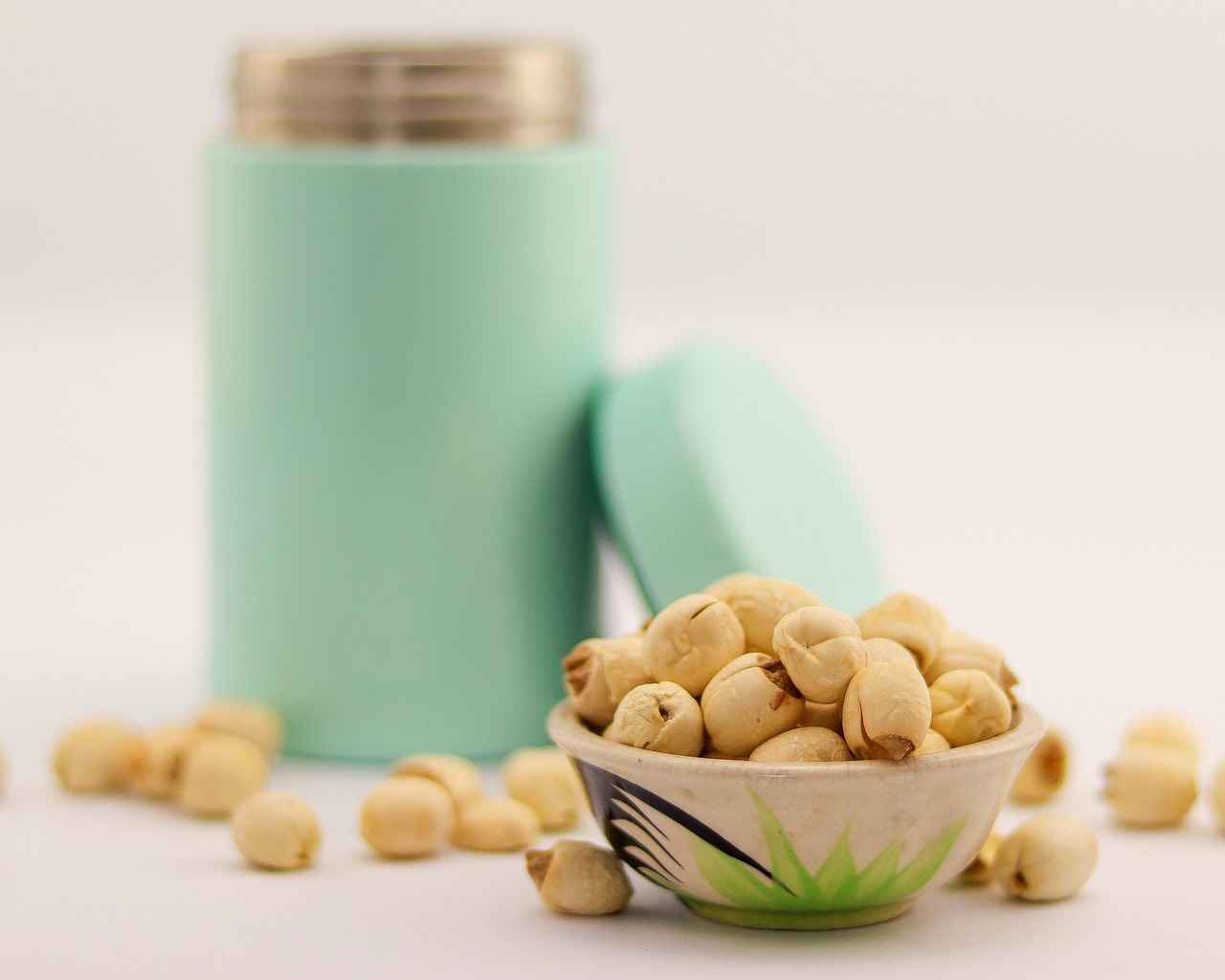
Creative Ways to Use Chia Seeds in Your Diet
Chia seeds are not just a health trend; they are a versatile ingredient that can elevate your meals while providing numerous nutritional benefits. With their unique texture and ability to absorb liquid, chia seeds can be creatively incorporated into a variety of dishes. Here are some innovative ways to include these tiny powerhouses in your diet.
Chia seeds are rich in fiber, protein, and omega-3 fatty acids, making them an excellent addition to any meal. They can help promote digestive health, provide sustained energy, and even support heart health. By integrating chia seeds into your diet, you can enhance the nutritional profile of your meals effortlessly.
One of the simplest and most popular ways to enjoy chia seeds is by making chia seed pudding. To prepare this dish:
- Ingredients: 1/4 cup chia seeds, 1 cup almond milk (or any milk of choice), sweetener to taste, and toppings like fruits or nuts.
- Instructions: Mix chia seeds with milk and sweetener in a bowl. Stir well and let it sit for about 15 minutes, then stir again to prevent clumping. Refrigerate for at least 2 hours or overnight. Top with your favorite fruits and nuts before serving.
This pudding is not only easy to make but also customizable based on your taste preferences.
Chia seeds can be a fantastic addition to your smoothies. They blend seamlessly and provide a nutritious boost. Here’s how:
- Add 1-2 tablespoons of chia seeds to your favorite smoothie recipe.
- Blend all ingredients as usual. The chia seeds will thicken the smoothie and add a delightful texture.
By doing this, you increase the fiber and protein content of your smoothie, making it a more filling meal or snack.
Another creative way to use chia seeds is in baked goods. They can replace eggs in many recipes, making them a great option for vegans. To use chia seeds as an egg substitute:
- Mix: 1 tablespoon of chia seeds with 2.5 tablespoons of water.
- Let it sit: Allow the mixture to sit for about 5-10 minutes until it forms a gel-like consistency.
- Incorporate: Use this mixture in your baking recipes as a substitute for one egg.
This method not only makes your baked goods healthier but also adds a unique texture.
For a crunchy texture and nutritional boost, sprinkle chia seeds on top of salads. They add a delightful crunch and can enhance the overall flavor. Additionally, you can create chia seed dressings:
- Ingredients: 1 tablespoon chia seeds, 1/4 cup olive oil, 2 tablespoons vinegar, salt, and pepper to taste.
- Instructions: Mix all ingredients in a jar and shake well. Let it sit for a few minutes to allow the chia seeds to absorb some liquid before drizzling over your salad.
This dressing not only tastes great but also provides additional health benefits.
Incorporating chia seeds into your diet is simple and rewarding. Whether you enjoy them in puddings, smoothies, baked goods, or salads, these tiny seeds can significantly enhance the nutritional value of your meals. Experiment with different recipes and find your favorite ways to enjoy this superfood!
Chia Seed Pudding: A Popular Recipe
Chia seed pudding has gained immense popularity as a nutritious and versatile dish that can be enjoyed at any time of the day. This delightful treat not only satisfies your sweet tooth but also provides a wealth of health benefits, making it a perfect addition to your diet. Below, we will explore a simple recipe to create your own chia seed pudding, along with tips to customize it to your liking.
To make a basic chia seed pudding, you will need the following ingredients:
- 1/4 cup chia seeds
- 1 cup milk (dairy or plant-based)
- 1-2 tablespoons sweetener (honey, maple syrup, or agave)
- 1/2 teaspoon vanilla extract (optional)
- Fruits, nuts, or toppings of your choice
Making chia seed pudding is a straightforward process:
- In a mixing bowl, combine the chia seeds, milk, sweetener, and vanilla extract.
- Stir the mixture well to ensure that the chia seeds are evenly distributed.
- Allow the mixture to sit for about 5 minutes, then stir again to prevent clumping.
- Cover the bowl and refrigerate for at least 2 hours, or overnight for a thicker consistency.
- Once set, give the pudding a good stir and serve it with your favorite toppings.
Chia seed pudding is not only delicious but also packed with nutrients. Here are some of the benefits:
- High in Fiber: Chia seeds are an excellent source of dietary fiber, promoting digestive health.
- Rich in Omega-3 Fatty Acids: These essential fats support heart health and reduce inflammation.
- Protein-Rich: Chia seeds contain a significant amount of protein, making them a great choice for vegetarians and vegans.
- Low in Calories: This pudding is a guilt-free dessert option that can satisfy your cravings without piling on the calories.
The beauty of chia seed pudding lies in its versatility. Here are some ideas to customize your pudding:
- Add Fruits: Incorporate fresh or frozen fruits like berries, bananas, or mangoes for added flavor and nutrition.
- Mix in Spices: Experiment with spices like cinnamon, nutmeg, or cocoa powder for a unique twist.
- Top with Nuts and Seeds: Add a crunchy texture with almonds, walnuts, or pumpkin seeds.
- Layer with Yogurt: For a creamy texture, layer your chia pudding with yogurt.
In conclusion, chia seed pudding is a delightful and nutritious option that is easy to prepare. With its numerous health benefits and endless customization possibilities, it’s no wonder this dish has become a favorite among health enthusiasts. Start experimenting with your own chia seed pudding today and enjoy a healthy treat that satisfies!
Adding Chia Seeds to Smoothies and Baked Goods
Chia seeds are a versatile superfood that can easily enhance the nutritional value of your meals. Not only are they rich in fiber, protein, and omega-3 fatty acids, but they also offer a unique texture that can elevate your smoothies and baked goods. This section will delve into practical tips for incorporating chia seeds into your favorite recipes without compromising flavor or texture.
Adding chia seeds to your smoothies is a simple way to boost their nutritional profile. These tiny seeds absorb liquid and expand, creating a satisfying texture that can make your smoothie feel more filling. Here are some tips:
- Start Small: If you’re new to chia seeds, start with 1 tablespoon per smoothie. Gradually increase the amount as you get accustomed to the texture.
- Pre-soak for Smooth Blending: Soaking chia seeds in water or your favorite milk for about 10-15 minutes before adding them to your smoothie can help achieve a smoother consistency.
- Pair with Flavorful Ingredients: Chia seeds have a mild flavor, so combine them with fruits like bananas, berries, or mangoes to enhance the overall taste of your smoothie.
Chia seeds can also be a fantastic addition to baked goods. They can act as a binding agent and add moisture, making them perfect for recipes such as muffins, breads, and cookies. Here are some effective strategies:
- Chia Egg Substitute: For a vegan option, mix 1 tablespoon of chia seeds with 2.5 tablespoons of water and let it sit for 15 minutes. This mixture can replace one egg in your baking recipes.
- Mix with Dry Ingredients: To ensure even distribution, mix chia seeds with your dry ingredients before combining them with wet ingredients. This helps avoid clumping.
- Experiment with Textures: For a crunchier texture, consider adding whole chia seeds to your batter. For a smoother texture, use ground chia seeds.
Here are a couple of delicious recipes to inspire you:
- Berry Chia Smoothie: Blend 1 cup of mixed berries, 1 banana, 1 cup of almond milk, and 1 tablespoon of chia seeds for a refreshing drink.
- Chia Seed Banana Bread: Incorporate 2 tablespoons of chia seeds into your favorite banana bread recipe for added nutrition and moisture.
Incorporating chia seeds into your smoothies and baked goods not only enhances their nutritional content but also adds unique textures that can elevate your culinary creations. By following these simple tips, you can seamlessly integrate chia seeds into your diet and enjoy their numerous health benefits.
Frequently Asked Questions
- Do chia seeds really expire?
Yes, chia seeds can expire, but they have a long shelf life of up to five years if stored properly. However, it’s essential to check for signs of spoilage before consuming them.
- How can I tell if my chia seeds are still good?
To determine if chia seeds are still good, look for any discoloration, clumping, or mold. Additionally, give them a smell test; fresh seeds have a neutral, nutty aroma, while rancid seeds may smell unpleasant.
- What is the best way to store chia seeds?
Store chia seeds in a cool, dry place in an airtight container to protect them from moisture and air. Refrigeration is not necessary, but it can help extend their shelf life.
- Can I use chia seeds after their expiration date?
While it’s possible to use chia seeds after their expiration date, you should check for any signs of spoilage. Consuming expired seeds can pose health risks, so it’s best to be cautious.
- What are some creative ways to use chia seeds?
You can add chia seeds to smoothies, baked goods, or make a delicious chia seed pudding. They are versatile and can enhance the nutritional profile of many recipes!
